 Pork machaca, eggs and potatoes wrapped in a tortilla, served with guacamole | |
| Type | Dried meat |
|---|---|
| Place of origin | Mexico |
| Region or state | Northern Mexico |
| Main ingredients | Beef or Pork |
| Ingredients generally used | Chilis and other spices |
Machaca Spanish: [maˈtʃaka] ⓘ is a traditionally dried meat, usually spiced beef or pork, that is rehydrated and then used in popular local cuisine in Northern Mexico and the Southwestern United States. It is also readily available in many groceries and supermarkets in these areas.[1][2][3][4] In areas where the dried meat product is not easy to obtain, slow-cooked roast beef (brisket)[5][6] or skirt steak[4] shredded and then fried is sometimes substituted.
Prepared machaca can be served any number of ways, such as tightly rolled flautas, tacos, or burritos,[7] or on a plate with eggs, onions and peppers (chiles verdes or chiles poblanos). Machaca is almost always served with flour tortillas that tend to be large, up to 20 inches in diameter.[8] A very popular breakfast or brunch dish is machaca with eggs, associated with miners in the state of Chihuahua.[9]
The dish is known primarily in the north of Mexico, and the southern regions of the U.S. states of Arizona, California, and New Mexico, and in Texas where it is known as Machacado. In central and southern Mexico, it is not well known by lower socioeconomic classes.[10]
History

Machaca was originally prepared most commonly from dried, spiced beef or pork, and then rehydrated and pounded to make it tender. The reconstituted meat would then be used to prepare any number of dishes.[11] While drying meat is one of the oldest forms of preservation, the drying of beef with chilis and other native spices was developed by the ranchers and cowboys of northern Mexico.[12]
After the arrival of refrigeration, dehydration was no longer needed for preservation. Most dried beef is sold in the United States as jerky. In Mexico, it is still sold for cooking and snacking; this is done primarily in the north and in small-scale operations.[12] Most machaca dishes now are made from beef that has been well-cooked, shredded, and then cooked in its juices until the desired consistency is achieved, which can be soupy, dry, or medio. In Tucson, Arizona and southward, the preparation is almost always dry, and approximates more closely the taste and texture of the original dish prepared from dried meat. Carne seca is an alternative name for machaca in parts of the Southwest and Sonora, Mexico.[11]
See also
References
- ↑ Adame, Homero (3 November 2013). "El origen del machacado con huevo" [The origin of machacado con huevo]. Mitos y leyendas de Homero Adame (in Spanish).
- ↑ Torres, Armando (22 March 2012). "Tía Lencha ampliará su mercado de exportación" [Tía Lencha expand its export market]. El Economista (in Spanish).
- ↑ "Estados Unidos abre frontera a la machaca". El Horizonte (in Spanish). 30 July 2013.
- 1 2 Chavez, Stephen (August 19, 2014). "A breakfast of machaca con huevos". Alhambra Source. Archived from the original on December 24, 2014.
- ↑ McKenna, John. Gran, gran fiesta Mexican food Irish Times 2 January 1999
- ↑ Chavez, Stephen & Rodriguez, Art (December 26, 2013). "Latino Recipes For The Holidays: Machaca Con Huevos". Huffington Post.
- ↑ Newburn, Paisley (February 20, 2014). "Delicious discoveries in Mexican cuisine". Phoenix (UBC Okanagan student paper). Archived from the original on November 1, 2014. Retrieved August 22, 2014.
- ↑ Griffith, J.F. (April 1997). "La Comida Mexicana en Tucson" (in Spanish). El Folklórico del Sur de Arizona. Archived from the original on 2014-04-23. Retrieved 2007-07-30.
- ↑ "Machaca con Huevo" (in Spanish). Instituto Tecnologico y Estudios Superiores de Monterrey (ITESM). Archived from the original on 2007-09-27. Retrieved 2007-07-30.
- ↑ Mitofsky, Consulta (October 2006). "Consumo de Platillos Tipicos: Encuesta Nacional de Viviendas" (PDF) (in Spanish). Archived from the original (PDF) on 2008-02-27.
Donde si se nota una diferencia importante es en la proporción de consumo en niveles socioeconómicos; los niveles bajos han consumido en menores ocasiones alimentos como chilorio, machaca y cochinita pibil, lo que elimina la creencia que son alimentos populares, sobre todo fuera de sus regiones de origen.
- 1 2 Jamison, C.A & Jamison, B. (1995). The Border Cookbook: Authentic Home Cooking of the American Southwest and Northern Mexico. Boston: The Harvard Common Press. ISBN 9781558321038.
machaca.
- 1 2 Ibarra-Armenta, A.S.; Valdez-Urías, D.B.; Zamorano-García, L.; Cumplido-Barbeitia, L.G.; González-Ríos, H. & González-Méndez, N.F. "Estudio y Mejora del Proceso de Secado de Carne de Bovino para Carne Seca y Machaca" (PDF). Archived from the original (PDF) on 2012-02-10.

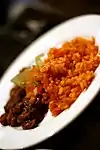

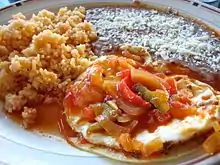
.jpg.webp)
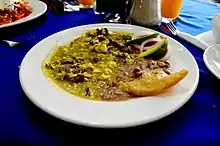

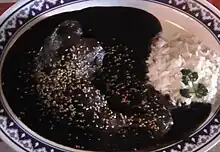
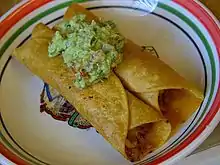
_01.JPG.webp)